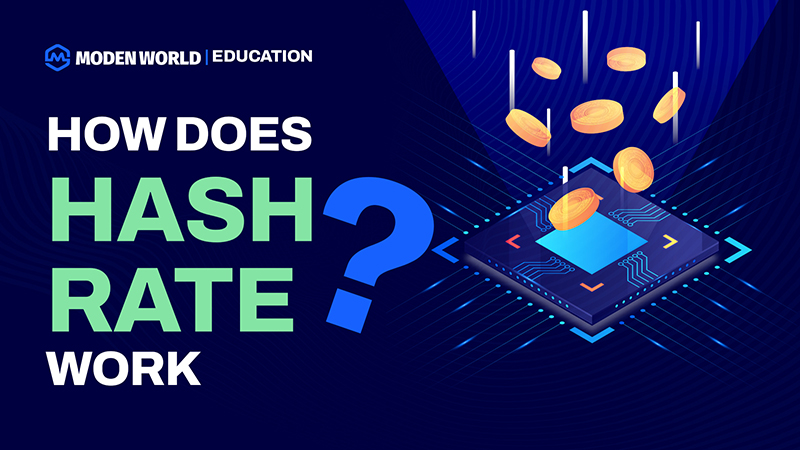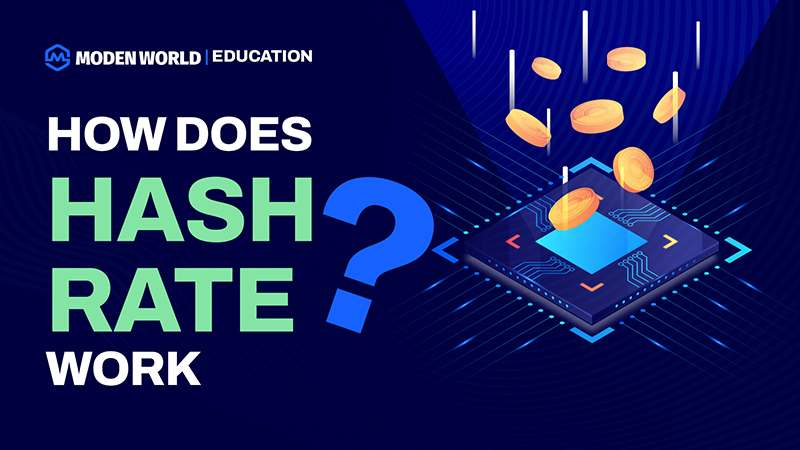
A essential component of any cryptocurrency using a Proof-of-Work (PoW) consensus method, such as Bitcoin, is the hash rate, also known as hash power. In a PoW network, hash rate is used to gauge how quickly a machine can perform an operation.
In essence, hash rate refers to how quickly a computer—or a crypto miner—is operating. The hash rate of a miner increases with speed, increasing the likelihood that the miner will successfully complete the following block in the network and earn their reward.
High hash rate = happy miner.
What do hashes mean?
A set of data that has been mapped to a specific size is called a hash. Data that has been hashed will give you a string of numbers and letters. Any alteration to the data will result in a full change to the output hash.
It's a method of reducing a dataset while maintaining the ability to check for data integrity. The hash output will retain the same length if you keep using the same hash function, regardless of how long the input is.
A mathematical conundrum must be solved in order to validate the next block being added to the blockchain of a Proof-of-Work cryptocurrency like Bitcoin. Each new block of data is saved as a hash.
Most miners employ computers only for the purpose of mining. These computers perform a predetermined task, which typically involves looking for a long, random number called a "nonce." The desired hash is returned by this nonce. The block's remaining content is predefined.
By requiring more zeros at the beginning of the hash, the difficulty of discovering the hash and, hence, the nonce, can be scaled.
Most miners use computers that are dedicated to mining. These computers work to complete a predefined task, which is usually searching for a long random number known as a “nonce”. This nonce returns the desired hash. The rest of the content in the block is predefined.
The difficulty of finding the hash, and therefore the nonce, can be scaled by increasing the amount of zeros required at the start of the hash.
This is how the Bitcoin network works.
How does the hash rate function?
Depending on whether the hash output satisfies predefined requirements, the number that the miner believes to be the nonce is revealed to be the nonce or not when it is joined with the ordered transactions in a block.
In order to locate the nonce and receive the reward, each miner in the network makes an educated guess.
Numerous times per second, miners test various random numbers. They must hash the block's contents each time they make a guess in order to determine if they have located the desired hash value and, consequently, the desired nonce.
The hash rate refers to how quickly a miner can create a new random number and hash it (along with the other block contents) to determine if it is the right nonce. The unit of measure for hash rate is hashes per second (h/s).
A miner who has a hash rate of 100 h/s is making 100 nonce guesses each second. This implies that the miner generates a random number once every second and hashes it 100 times along with the block's contents.
The hash rate can be viewed from a network perspective as well. Consider Bitcoin as an example. Knowing the hash rates of every Bitcoin miner in the globe would allow one to compute the network's overall hash rate.
Finding the right nonce becomes more challenging when a network's overall hash rate rises since there is more competition.
Hash wars
If you've read about hash rates, you may have come across the phrase "hash war." Hash wars can happen when two forks of a chain compete to have the higher hash rate in an effort to establish their chain as the dominant one.
Supporters of Bitcoin SV are said to have held more than 56% of the hashpower in Bitcoin Cash before the hard fork. Therefore, it was anticipated that, only in terms of hash power, BCH SV will emerge as the dominant chain, or the "true Bitcoin Cash," prior to the fork.
Things changed as soon as the fork was finished. In reference to the hash war between the two forks, BCH SV supporter Craig Wright tweeted that there would be "constant rivalry until one dies as we do not stop."
Jihan Wu, the co-founder of the mining pool Bitmain, stated plans to convert some of Bitmain's mining power from Bitcoin to BCH ABC on the side of the BCH ABC camp.
In a similar vein, the mining pool for Bitcoin.com declared it would divert some of its resources from mining Bitcoin to BCH ABC.
Each side wants to try to establish their chain as the dominant one, which is why there is a hash war. However, as a result of this hash war, mining power was diverted to mining the forks of BCH, which resulted in a 6% decrease in Bitcoin's hash rate. Following this, Bitcoin shattered the USD 6000 historical support.

👉Start Cloud Mining with us: MODENWORLD
👉Follow our official Twitter: @modenworld
👉Join our community on Telegram: @ModenWorld_group